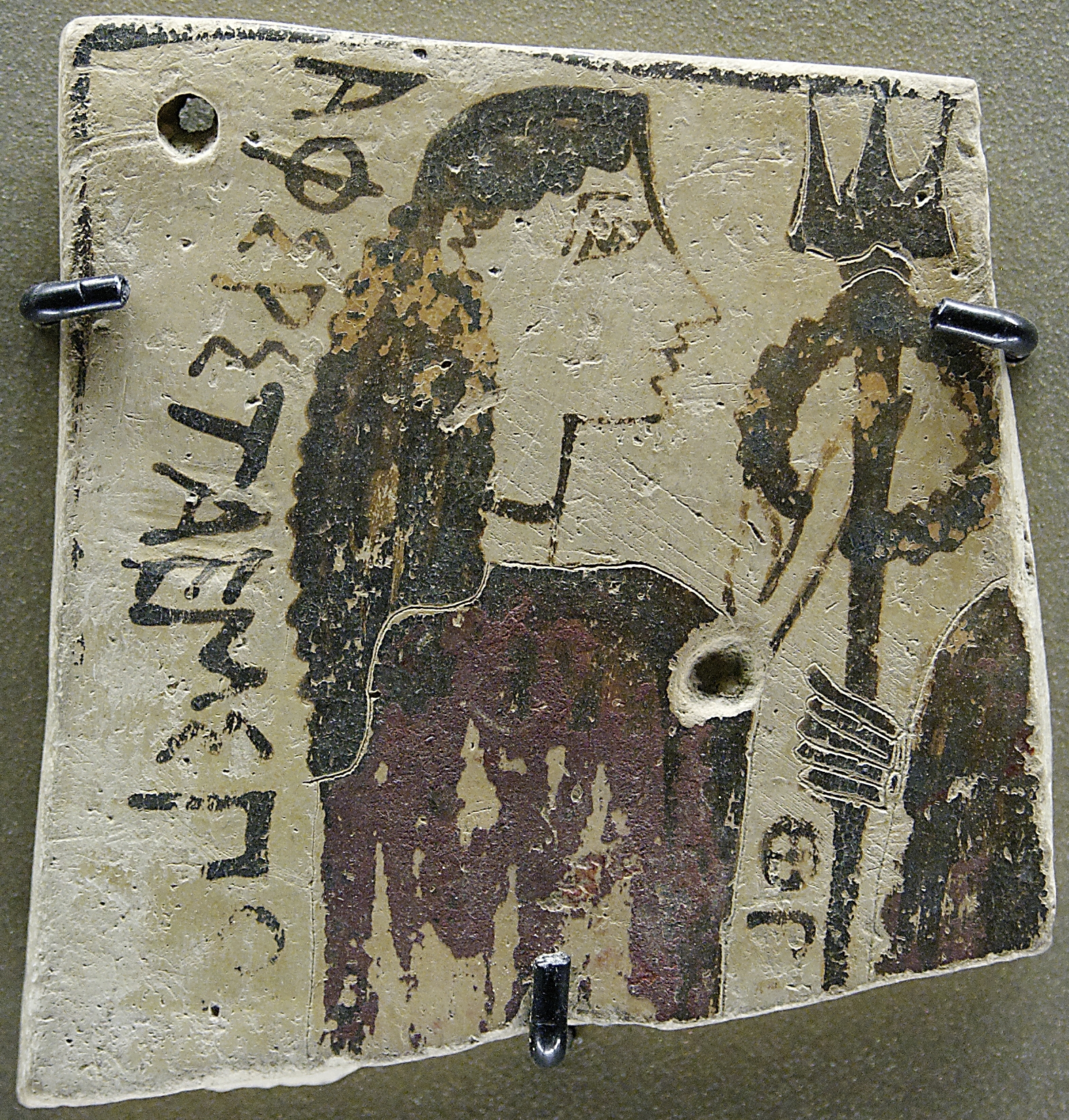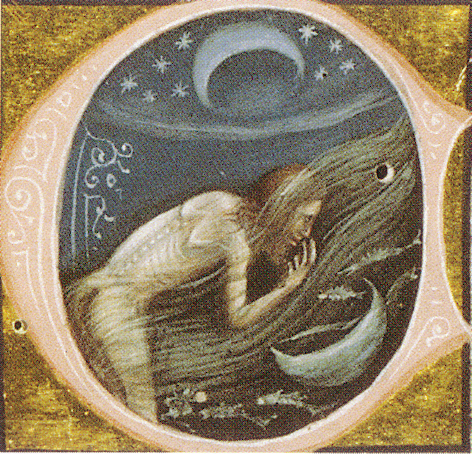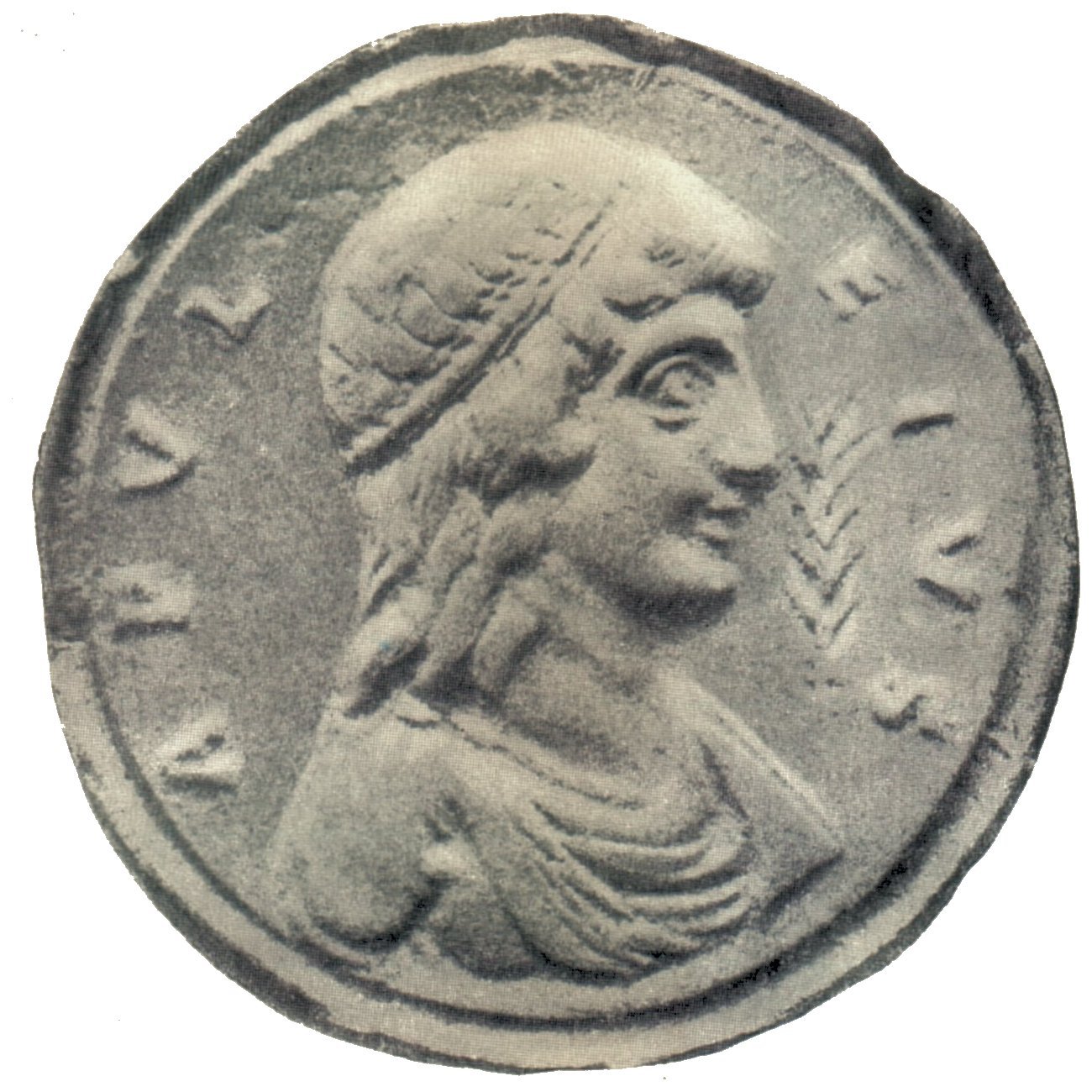|
Salacia
In ancient Roman mythology, Salacia ( , ) was the female divinity of the sea, worshipped as the goddess of salt water who presided over the depths of the ocean. Neptune was her consort. That Salacia was the consort of Neptune is implied by Varro, and is positively affirmed by Seneca, Augustine and Servius. She is identified with the Greek goddess Amphitrite, consort of Poseidon. The god Neptune wanted to marry Salacia, but she was in great awe of her distinguished suitor, and to preserve her virginity, with grace and celerity she managed to glide out of his sight, and hid from him in the Atlantic Ocean. The grieving Neptune sent a dolphin to look for her and persuade the fair nymph to return and share his throne. Salacia agreed to marry Neptune and the King of the Deep was so overjoyed at these good tidings that the dolphin was awarded a place in the heavens, where he now forms a well known constellation Delphinus. Salacia is represented as a beautiful nymph, crowned with ... [...More Info...] [...Related Items...] OR: [Wikipedia] [Google] [Baidu] |
120347 Salacia
120347 Salacia, provisional designation , is a large planetoid in the Kuiper belt, approximately 850 kilometers in diameter. As of 2018, it is located 44.8 astronomical units from the Sun, and reaches apparent magnitude 20.7 at opposition. Salacia was discovered on 22 September 2004, by American astronomers Henry Roe, Michael Brown and Kristina Barkume at the Palomar Observatory in California, United States. It has been observed 124 times, with precovery images back to 25 July 1982. Salacia orbits the Sun at an average distance that is slightly greater than that of Pluto. It was named after the Roman goddess Salacia and has a single known moon, Actaea. Brown estimated that Salacia is nearly certainly a dwarf planet. However, William Grundy ''et al.'' argue that objects in the size range of 400–1,000 km, with densities of ≈ 1.2 g/cm3 or less and albedos less than ≈ 0.2, have likely never compressed into fully solid bodies or been resurfaced, let alone ... [...More Info...] [...Related Items...] OR: [Wikipedia] [Google] [Baidu] |
Neptune (god)
Neptune ( la, Neptūnus ) is the god of freshwater and the sea in Roman religion. He is the counterpart of the Greek god Poseidon.''Larousse Desk Reference Encyclopedia'', The Book People, Haydock, 1995, p. 215. In the Greek tradition, he is a brother of Jupiter and Pluto; the brothers preside over the realms of heaven, the earthly world (including the underworld), and the seas. Salacia is his wife. Depictions of Neptune in Roman mosaics, especially those in North Africa, were influenced by Hellenistic conventions. He was likely associated with freshwater springs before the sea. Like Poseidon, he was also worshipped by the Romans as a god of horses, as ''Neptunus equestris'' (a patron of horse-racing). Worship The theology of Neptune is limited by his close identification with the Greek god Poseidon, one of many members of the Greek pantheon whose theology was later tied to a Roman deity. The ''lectisternium'' of 399 BC indicated that the Greek figures of Poseidon, Ar ... [...More Info...] [...Related Items...] OR: [Wikipedia] [Google] [Baidu] |
Neptune (mythology)
Neptune ( la, Neptūnus ) is the god of freshwater and the sea in Roman religion. He is the counterpart of the Greek god Poseidon.''Larousse Desk Reference Encyclopedia'', The Book People, Haydock, 1995, p. 215. In the Greek tradition, he is a brother of Jupiter and Pluto; the brothers preside over the realms of heaven, the earthly world (including the underworld), and the seas. Salacia is his wife. Depictions of Neptune in Roman mosaics, especially those in North Africa, were influenced by Hellenistic conventions. He was likely associated with freshwater springs before the sea. Like Poseidon, he was also worshipped by the Romans as a god of horses, as ''Neptunus equestris'' (a patron of horse-racing). Worship The theology of Neptune is limited by his close identification with the Greek god Poseidon, one of many members of the Greek pantheon whose theology was later tied to a Roman deity. The '' lectisternium'' of 399 BC indicated that the Greek figures of Poseidon ... [...More Info...] [...Related Items...] OR: [Wikipedia] [Google] [Baidu] |
Amphitrite
In ancient Greek mythology, Amphitrite (; grc-gre, Ἀμφιτρίτη, Amphitrítē) was the goddess of the sea, the queen of the sea, and the wife of Poseidon. She was a daughter of Nereus and Doris (or Oceanus and Tethys).Roman, L., & Roman, M. (2010). Under the influence of the Olympian pantheon, she became the consort of Poseidon and was later used as a symbolic representation of the sea. Her Roman counterpart is Salacia, a comparatively minor figure, and the goddess of saltwater. Mythology Amphitrite was a daughter of Nereus and Doris (and thus a Nereid), according to Hesiod's ''Theogony'', but of Oceanus and Tethys (and thus an Oceanid), according to the '' Bibliotheca'', which actually lists her among both the Nereids and the Oceanids. Others called her the personification of the sea itself (saltwater). Marriage to Poseidon When Poseidon desired to marry her, Amphitrite, wanting to protect "her virginity", fled to the Atlas mountains. Poseidon sent m ... [...More Info...] [...Related Items...] OR: [Wikipedia] [Google] [Baidu] |
Roman Goddesses
The Roman deities most widely known today are those the Romans identified with Greek counterparts (see '' interpretatio graeca''), integrating Greek myths, iconography, and sometimes religious practices into Roman culture, including Latin literature, Roman art, and religious life as it was experienced throughout the Empire. Many of the Romans' own gods remain obscure, known only by name and sometimes function, through inscriptions and texts that are often fragmentary. This is particularly true of those gods belonging to the archaic religion of the Romans dating back to the era of kings, the so-called "religion of Numa", which was perpetuated or revived over the centuries. Some archaic deities have Italic or Etruscan counterparts, as identified both by ancient sources and by modern scholars. Throughout the Empire, the deities of peoples in the provinces were given new theological interpretations in light of functions or attributes they shared with Roman deities. An exten ... [...More Info...] [...Related Items...] OR: [Wikipedia] [Google] [Baidu] |
Venilia
Venilia (pronounced , or as Latin ''Venīlia'') is a Roman deity associated with the winds and the sea. According to Virgil and Ovid, she was a nymph, the sister of Amata and the wife of Janus (or Faunus), with whom she had three children: Turnus, Juturna In the myth and religion of ancient Rome, Juturna, or Diuturna, was a goddess of fountains, wells and springs, and the mother of Fontus by Janus. Mythology Juturna was an ancient Latin deity of fountains, who in some myths was turned by Jupi ..., and Canens. She and Salacia are the ''paredrae'' of Neptune. The Venilia Mons, a mountain on Venus, is named for her. See also * '' Pantoporia venilia'', a butterfly of the family Nymphalidae * '' Terebra venilia'', a species of sea snail External links Neptune, Venilia, and Triton Fountain, Library of Congress, Washington DCVenilia and Horse, Library of Congress, Washington DCVenilia and Horse, detail References Roman goddesses Sky and weather goddesses Sea and ri ... [...More Info...] [...Related Items...] OR: [Wikipedia] [Google] [Baidu] |
Herculaneum Neptune And Amphitrite
Herculaneum (; Neapolitan and it, Ercolano) was an ancient town, located in the modern-day ''comune'' of Ercolano, Campania, Italy. Herculaneum was buried under volcanic ash and pumice in the eruption of Mount Vesuvius in AD 79. Like the nearby city of Pompeii, Herculaneum is famous as one of the few ancient cities to be preserved nearly intact, as the ash that blanketed the town protected it against looting and elements. Although less known than Pompeii today, it was the first, and the only discovered buried Vesuvian city (in 1709) for a long time. Pompeii was revealed only in 1748 and identified in 1763. Unlike Pompeii, the mainly pyroclastic material that covered Herculaneum carbonized and preserved more wood in objects such as roofs, beds, and doors, as well as other organic-based materials such as food and papyrus. According to the traditional tale, the city was rediscovered by chance in 1709, during the drilling of a well. Remnants of the city, however, were already fo ... [...More Info...] [...Related Items...] OR: [Wikipedia] [Google] [Baidu] |
Delphinus
Delphinus (Pronounced or ) is a small constellation in the Northern Celestial Hemisphere, close to the celestial equator. Its name is the Latin version for the Greek word for dolphin (). It is one of the 48 constellations listed by the 2nd century astronomer Ptolemy, and remains one of the 88 modern constellations recognized by the International Astronomical Union. It is one of the smaller constellations, ranked 69th in size. Delphinus' five brightest stars form a distinctive asterism symbolizing a dolphin with four stars representing the body and one the tail. It is bordered (clockwise from north) by Vulpecula, Sagitta, Aquila, Aquarius, Equuleus and Pegasus. Delphinus is a faint constellation with only two stars brighter than an apparent magnitude of 4, Beta Delphini (Rotanev) at magnitude 3.6 and Alpha Delphini (Sualocin) at magnitude 3.8. Mythology Delphinus is associated with two stories from Greek mythology. According to myth, the first Greek god Poseidon wanted ... [...More Info...] [...Related Items...] OR: [Wikipedia] [Google] [Baidu] |
Sea And River Goddesses
The sea, connected as the world ocean or simply the ocean, is the body of salty water that covers approximately 71% of the Earth's surface. The word sea is also used to denote second-order sections of the sea, such as the Mediterranean Sea, as well as certain large, entirely landlocked, saltwater lakes, such as the Caspian Sea. The sea moderates Earth's climate and has important roles in the water, carbon, and nitrogen cycles. Humans harnessing and studying the sea have been recorded since ancient times, and evidenced well into prehistory, while its modern scientific study is called oceanography. The most abundant solid dissolved in seawater is sodium chloride. The water also contains salts of magnesium, calcium, potassium, and mercury, amongst many other elements, some in minute concentrations. Salinity varies widely, being lower near the surface and the mouths of large rivers and higher in the depths of the ocean; however, the relative proportions of dissolved ... [...More Info...] [...Related Items...] OR: [Wikipedia] [Google] [Baidu] |
Aulus Gellius
Aulus Gellius (c. 125after 180 AD) was a Roman author and grammarian, who was probably born and certainly brought up in Rome. He was educated in Athens, after which he returned to Rome. He is famous for his ''Attic Nights'', a commonplace book, or compilation of notes on grammar, philosophy, history, antiquarianism, and other subjects, preserving fragments of the works of many authors who might otherwise be unknown today. Name Medieval manuscripts of the ''Noctes Atticae'' commonly gave the author's name in the form of "Agellius", which is used by Priscian; Lactantius, Servius and Saint Augustine had "A. Gellius" instead. Scholars from the Renaissance onwards hotly debated which one of the two transmitted names is correct (the other one being presumably a corruption) before settling on the latter of the two in modern times. Life The only source for the life of Aulus Gellius is the details recorded in his writings. Internal evidence points to Gellius having been born betwe ... [...More Info...] [...Related Items...] OR: [Wikipedia] [Google] [Baidu] |
The Golden Ass
The ''Metamorphoses'' of Apuleius, which Augustine of Hippo referred to as ''The Golden Ass'' (''Asinus aureus''), is the only ancient Roman novel in Latin to survive in its entirety. The protagonist of the novel is Lucius. At the end of the novel, he is revealed to be from Madaurus, the hometown of Apuleius himself. The plot revolves around the protagonist's curiosity (''curiositas'') and insatiable desire to see and practice magic. While trying to perform a spell to transform into a bird, he is accidentally transformed into an ass. This leads to a long journey, literal and metaphorical, filled with inset tales. He finally finds salvation through the intervention of the goddess Isis, whose cult he joins. Origin The date of composition of the ''Metamorphoses'' is uncertain. It has variously been considered by scholars as a youthful work preceding Apuleius' ''Apology'' of 158–159, or as the climax of his literary career, and perhaps as late as the 170s or 180s. Apuleius adap ... [...More Info...] [...Related Items...] OR: [Wikipedia] [Google] [Baidu] |
Apuleius
Apuleius (; also called Lucius Apuleius Madaurensis; c. 124 – after 170) was a Numidian Latin-language prose writer, Platonist philosopher and rhetorician. He lived in the Roman province of Numidia, in the Berber city of Madauros, modern-day M'Daourouch, Algeria. He studied Platonism in Athens, travelled to Italy, Asia Minor, and Egypt, and was an initiate in several cults or mysteries. The most famous incident in his life was when he was accused of using magic to gain the attentions (and fortune) of a wealthy widow. He declaimed and then distributed his own defense before the proconsul and a court of magistrates convened in Sabratha, near ancient Tripoli, Libya. This is known as the ''Apologia''. His most famous work is his bawdy picaresque novel the ''Metamorphoses'', otherwise known as '' The Golden Ass''. It is the only Latin novel that has survived in its entirety. It relates the adventures of its protagonist, Lucius, who experiments with magic and is accidentall ... [...More Info...] [...Related Items...] OR: [Wikipedia] [Google] [Baidu] |







